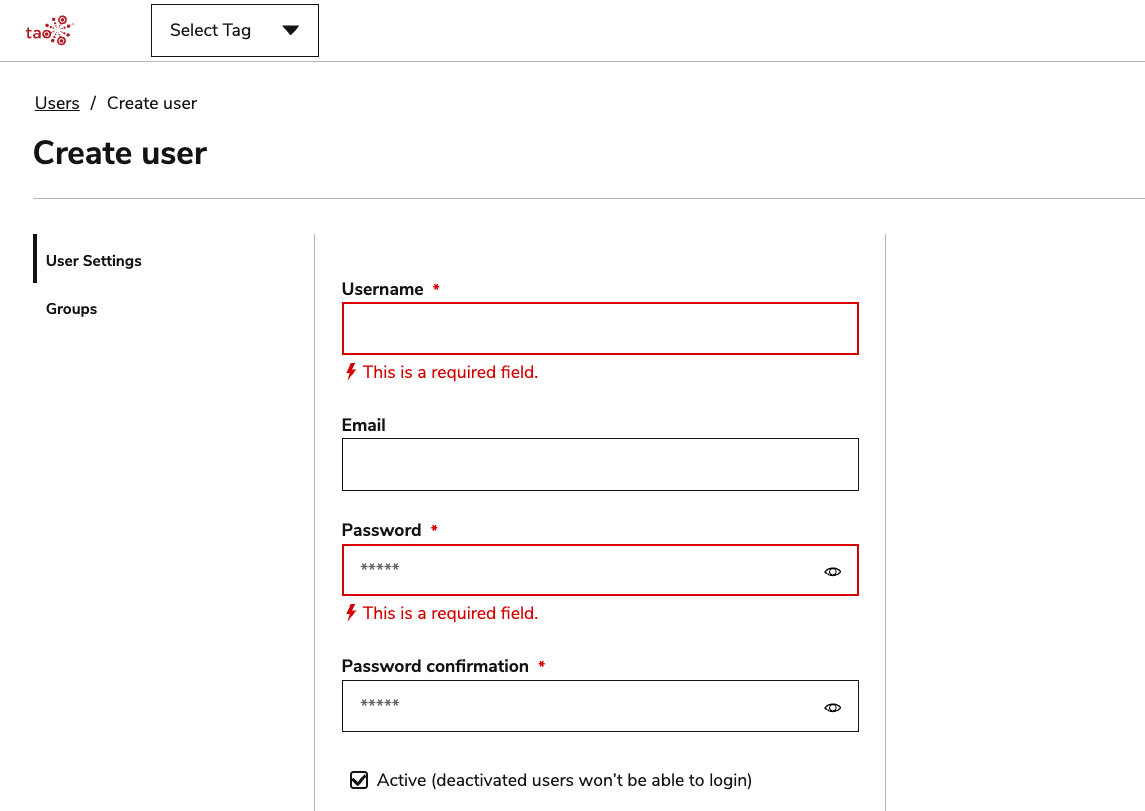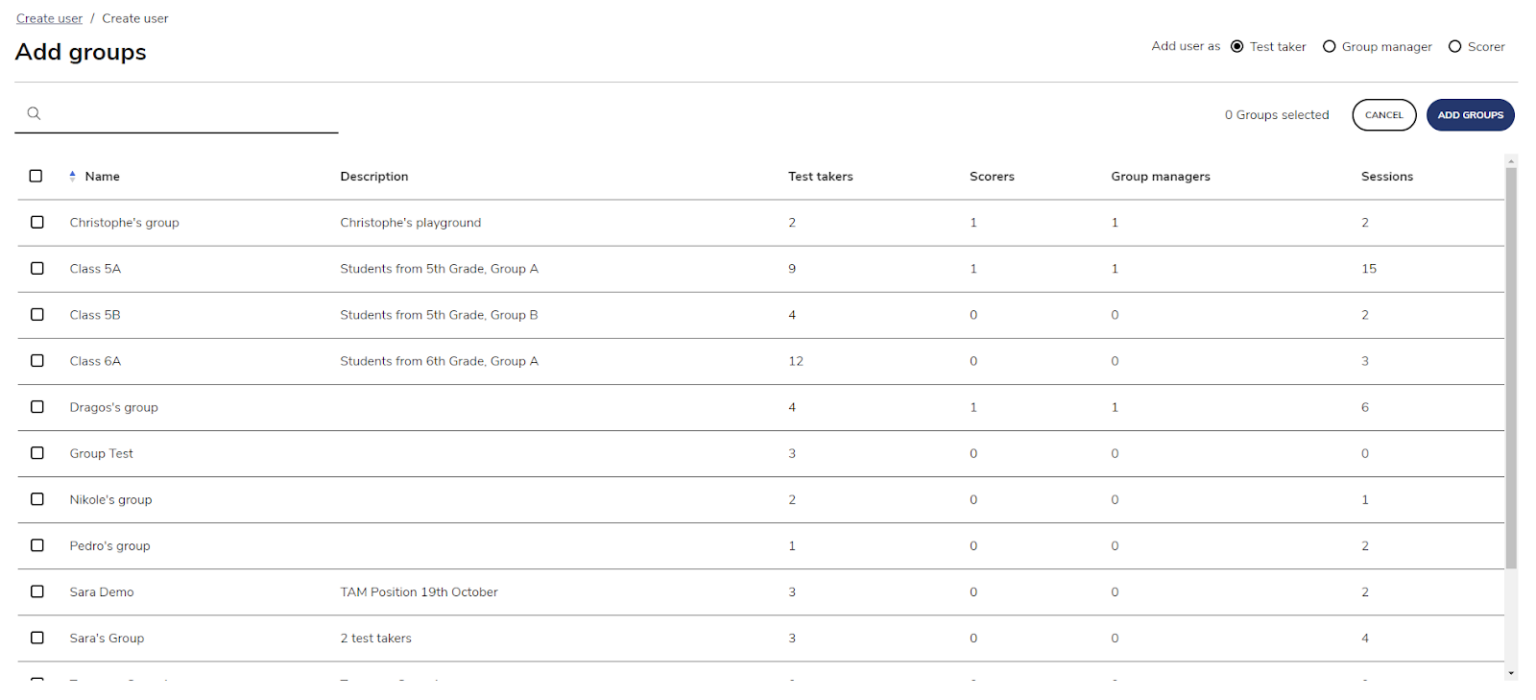Creating a new user
Admins can view, edit, and create users from the Users tile in the TAO Portal upon login, or via the side bar menu (Users).
1. Select CREATE USER in the top-right of the User management interface.

Creating a new user in the TAO Portal
2. Populate the fields in the User Settings tab.
User Settings contains the main information about the user you are creating. Mandatory information is marked by an asterisk *:
Username*: The username used to identify the user on TAO Portal.
Password*: The username’s password used to identify on TAO Portal.
Password Confirmation*: To confirm the password previously inserted in Password.
Active flag: To create an enabled (active), disabled (inactive) user. By default Active is checked. Inactive users cannot login.
Name: The name assigned to a user. Names can be updated.
Email: An email assigned to a user. Emails can be updated.
If your account is configured to allow email notifications, entering an email for a new user is mandatory. This configuration is not available by default. For more information, see Customizing an account in the TAO Portal.
User interface language: (If available) the language used to present the UI to the given user. By default this field is empty, but shows the default language configured at the TAO Portal level (which may change with time). To guarantee that this user will access TAO Portal using a predefined language, you can select one from the dropdown list.

Selecting a language
Organizational unit*: The organizational unit a user is assigned to. For more information on assigning users to organizational units, see Managing users using hierarchies.
If it is important that that your organization’s information per unit is kept separate, the organizational hierarchy should be created before creating users or groups. However, this is not mandatory, as users and groups can be re-assigned at a later stage (once new OUs are created). For more information, see Organization management.
Global Role: A list of the flags related to the global roles. You can assign more than one global role to a user by selecting more options.

Selecting a user’s role
Understanding the permissions associated with each role is important when creating or editing a user. For more information on role permissions, see Global and Group roles.
If a user needs to be enrolled to one or more groups, switch to the Groups tab to assign multiple groups. This is not a mandatory step, as it is perfectly valid for a user to have only a global role and not to be a member of any group. Group enrollment can also be done from the Groups Management page.
3. Select the Groups tab to assign the user to a group(s).

Add groups
4. Select Add Groups to view a list of available groups.

Available groups
To find a specific group, use the top-left search box. You can also select one or more groups using the check boxes available on each row. For more information on groups, see Group management.
To assign a group-related role for the user you are creating, select a role at the top right of the table. The options for group-related roles are the following:
Test-taker
Group Manager
Scorer
IMPORTANT: A user can be enrolled in multiple groups with a different role. For example a user could be enrolled as a Scorer in one group and as Group manager in another one. This cannot be done in a single operation. To enroll assign a user to a secondary role, open the Add Group interface for each role you want to assign to the user.
If a user is assigned a test-taker role + any other role, they will be able to switch between the test taker view and the administrative view by selecting their avatar in the top-right of the Portal interface. For more information, see Customizing an account in the TAO Portal.
For more information on roles, see Global and Group roles.
Once groups are assigned to a user, they appear in the Groups tab together with the corresponding role.

Example of groups assigned to a user
You can remove all assigned groups by using the Remove from all button, or click the X on the right side of a line to remove a specific enrollment.
